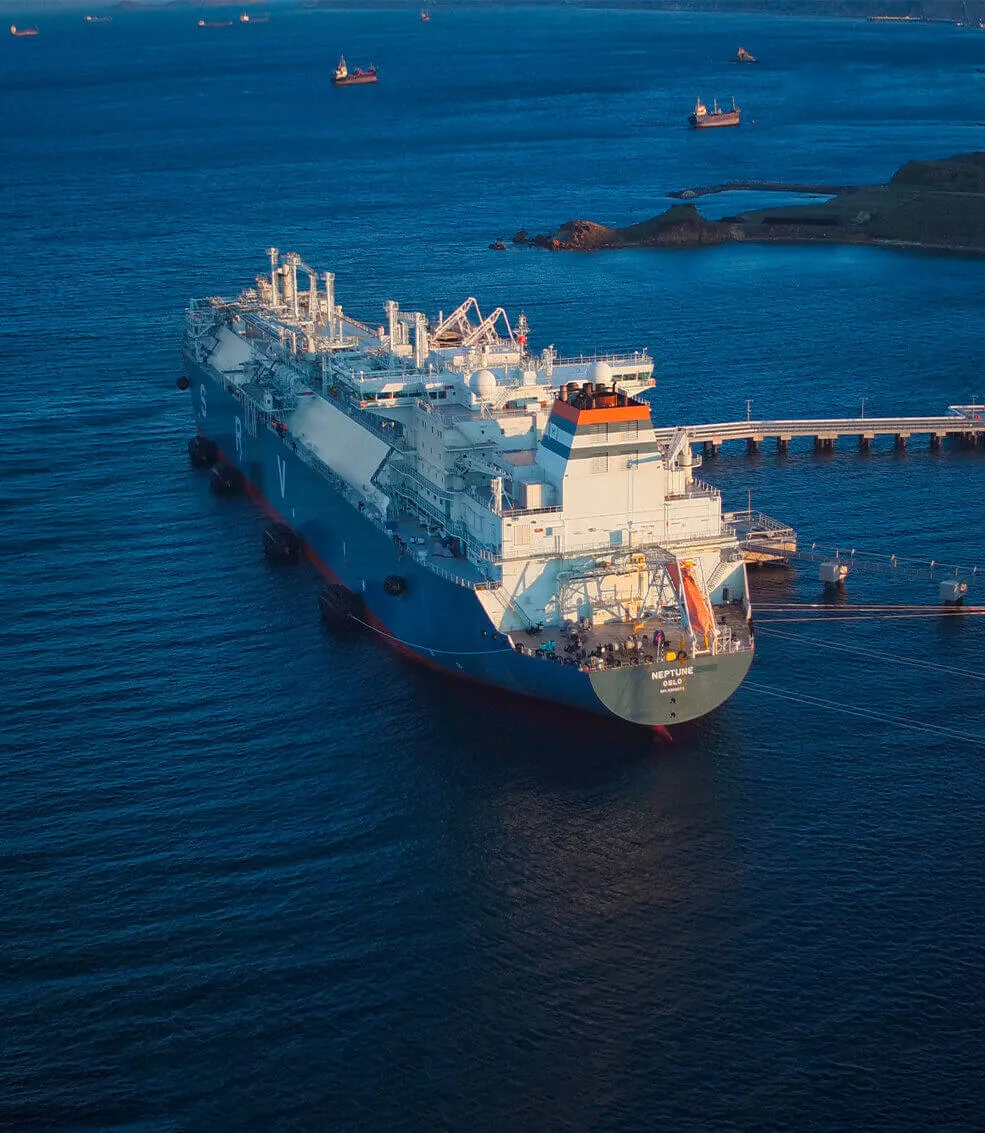New guidance on nearshore mooring systems
DNV GL has issued a new guidance document addressing the challenges specific to long-term mooring of floating installations in shallow water and nearshore applications.
For many years DNV GL has been providing assessment services for moorings of floating offshore installations, such as drilling units and floating production units. These assessments have been based on the DNV GL publication DNVGL-OS-E301 ‒ Position Mooring Systems. In addition, DNV GL Noble Denton has been providing guidance on inshore mooring, which is usually of short duration.

Uptake of FSRUs as LNG import terminals
In recent years however, floating storage and regasification units (FSRUs) have been increasingly used as LNG import terminals, and this trend will likely continue as it provides a relatively quick and inexpensive solution for gas import compared to onshore installations. Onshore installations can take years to implement, from planning and permitting through to construction. And while new land-based LNG projects are often met with scepticism from the public that can be hard to overcome, floating installations are rarely questioned. In nearly all cases they are located close to or directly on the shore, and quite frequently they are expected to remain at the same location for a long period of time ‒ from five up to 20 years. Similarly, nearshore floating units also provide a ready means of exporting land-based gas in the form of LNG.
This type of application differs significantly from long-term offshore mooring, which is addressed by DNVGL-OS-E301, and from shorter-term mooring common in the general shipping industry, as addressed by codes developed by the Oil Companies International Marine Forum (OCIMF) and the Society of International Gas Tanker and Terminal Operators (SIGTTO).
The specific deployment conditions and risks associated with floating units mooring nearshore for extended periods of time prompted DNV GL to develop a new Offshore Technical Guidance called OTG 18 ‒ Guidance for long-term nearshore mooring systems. Conn Fagan, Vice President Business Development Offshore Classification at DNV GL Maritime, explains the rationale: “This new Offshore Technical Guidance clarifies our approach to the specific challenges of long-term nearshore and inshore mooring. We have issued this document as a supplement to our existing Offshore Standard for Position Mooring Systems, DNVGL-OS-E301.”

Characteristics and risks of mooring in shallow water
OTG 18 addresses aspects and risks specific to mooring in shallow water, at jetties or at the quayside for long periods. Typical threats and phenomena encountered in these scenarios include tsunamis, seiches (wind-induced wave effects), infragravity waves on low-sloping seabeds (waves with periods between 20 seconds and several minutes), solitons (self-reinforcing solitary wave packets propagating at constant velocity without changing shape), water level variations such as tides and storm surges, local bathymetric conditions, hydrodynamic effects from passing ships, loads from offloading vessels, and others. The forces resulting from all of these factors differ significantly from those acting on floating units further offshore or at high sea. DNV GL also proposes safety factors to be used for nearshore mooring designs to account for these factors.
“The document is intended to be used in all applications involving longer-term mooring in shallow water, at jetties or at the dockside. This would typically include floating LNG regasification units, floating LNG liquefaction units taking gas from shore, and floating storage units”, Fagan points out.
Contact us

